

Matt Campbell
2026 Hyundai Tucson Hybrid review
5 Hours Ago
Audi’s performance SUV returns to its diesel origins for the first time in a generation. But is the limited-run SQ5 TDI worth a look with a new version coming next year?
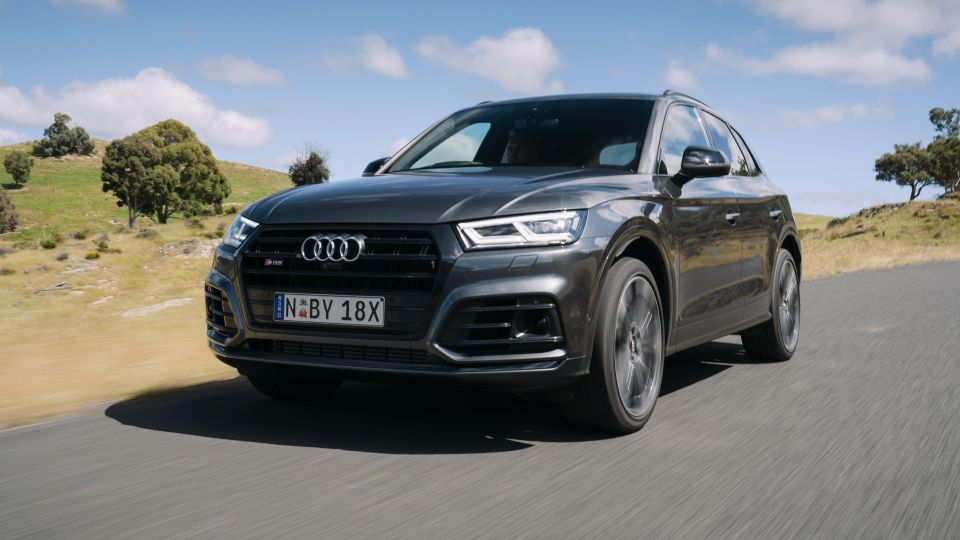
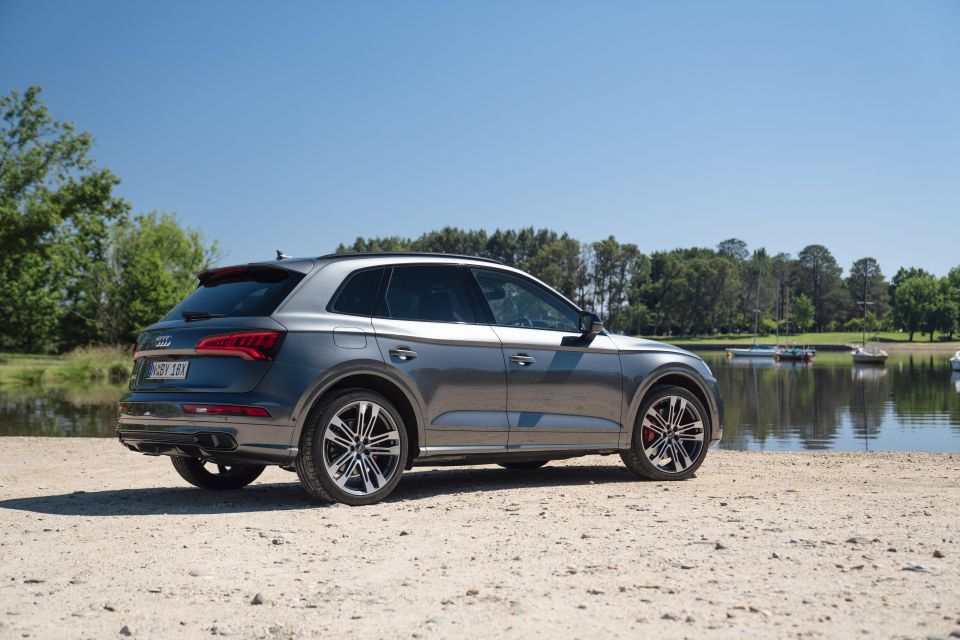

Journalist
New from
$104,900
excl. on-roads

Journalist
New from
$104,900
excl. on-roads


Journalist
New from
$104,900
excl. on-roads

Journalist
New from
$104,900
excl. on-roads
Quickly see how this car stacks up against its competition. Select any benchmark to see more details.
Where expert car reviews meet expert car buying – CarExpert gives you trusted advice, personalised service and real savings on your next new car.
The SQ5 TDI is back. And fans of the original, of which there are a good many, will undoubtedly rejoice now there’s an alternative to the petrol TFSI version that’s been exclusively offered since the gen-two SQ5 arrived in 2017.
It arrives wearing SQ5 TDI Special Edition nomenclature, this diesel version adding a bit of extra kit over the mainstay TFSI variant with just 240 examples due for sale.
It’s also boasting a revised version of its 3.0-litre V6 heart that integrates EPC, or an electric-powered compressor using 48V power, as used offered in various ‘S’ performers in Europe. Regardless, 255kW and 700Nm with 6.8L/100km frugality make for a very compelling number set. So far, so good.

There are, though, some things worth considering through those diesel-tinged glasses. This gen-two version arrived locally later than Audi Australia had hoped, and the newly-facelifted 2021 SQ5, of which there’ll be wagon and new Sportback body styles, is just six months away from arriving.
Next year’s facelift essentially brings the fresh infotainment and connectivity already found in much of the locally-released stable, meaning this Special Edition has the old (though not necessarily worse) stuff. Six months, 240 units – it’s not hard to read between the lines here.
So, is the oiler renaissance much chop? And even if you’re already sold on the SQ5 TDI concept, do you grab this spec-sweetened, somewhat exclusive 2020 version or wait until mid-2021 for the facelift? Let’s find out.
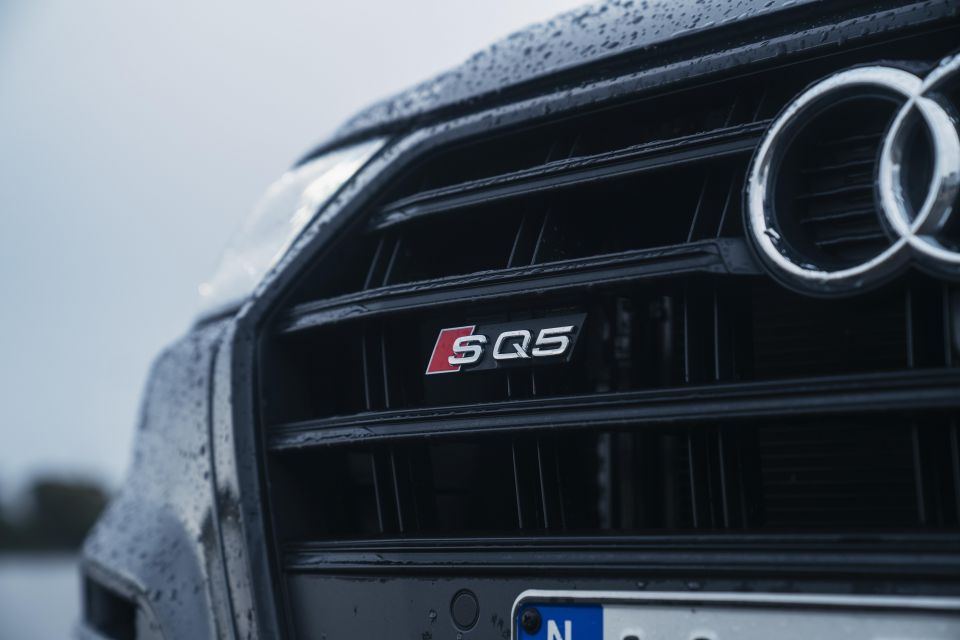
The SQ5 TDI Special Edition lists for $104,900 before on-road costs. It’s $3764 pricier than the TFSI petrol version.
The positive spin is that it’s $4000 cheaper (and more powerful than) the TDI-powered SQ5 Plus from four years ago.
Competition? Arguably the SQ5 TDI’s closest like-for-like rival is the boutique Alpina XD3, which will arrive in updated form early in 2021 also with mild-hybrid tech priced from $114,900 before on-roads.
Elsewhere, there’s the not-so-sporty BMW X3 xDrive30d ($90,900 list) perhaps more closely aligned with Audi’s own Q5 50 TDI quattro sport ($85,089 list) – a standard cross-shop in itself – while Mercedes-AMG has the GLC43 ($115,000 list) in petrol form.
Speaking of petrol competitors, you could throw in the BMW X3 M40i xDrive ($111,900 list) or Porsche Macan GTS ($112,300 list) if going quick where any form of internal-combustion will do.
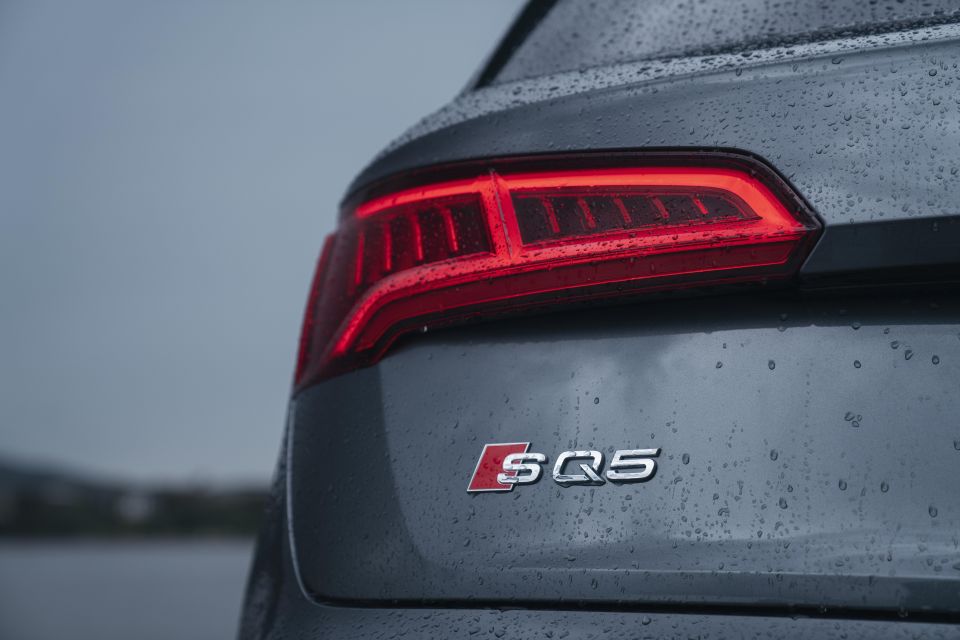
If it’s fuel-miser performance you’re after an inspired alternative might be the Volvo XC60 T8 PHEV ($99,990 list) though we’re already starting to drift away from the concept here.
There’s a niche for performance diesel mid-sized SUVs. And clearly Audi has cornered it.
Our Daytona Grey test car lobs at $110,350 before on-roads thanks to the addition of a Quattro sport differential ($2990), adaptive air suspension ($2150) and, yes, a climate-controlled beverage holder ($350).
Metallic and pearl effect paintwork is no extra cost though the TDI version of the SQ5 comes with a smaller choice of colours (five) compared with the TFSI version (nine). There’s also a choice of two different alloy wheel styles.
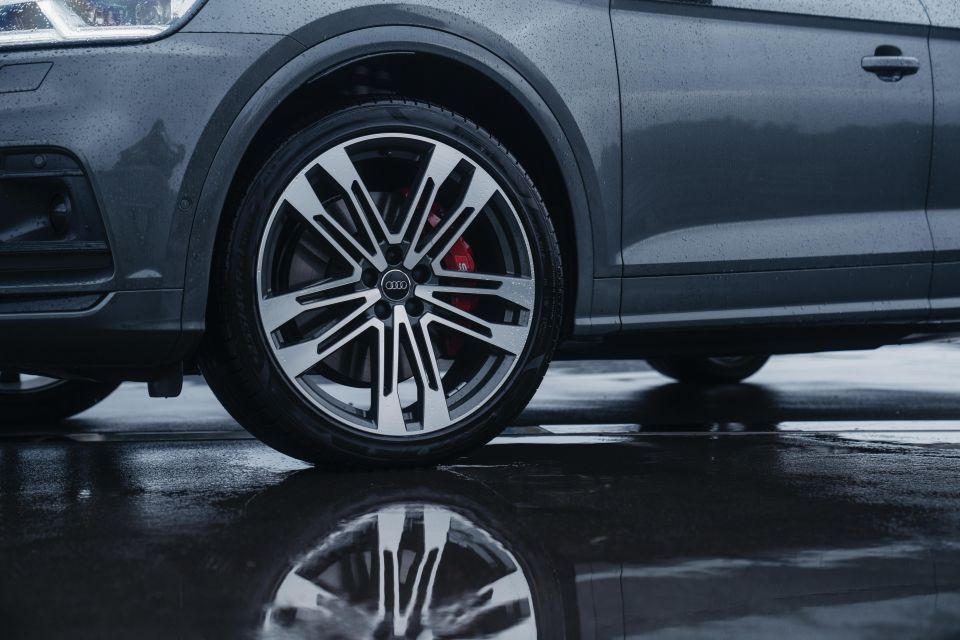
Buy your new car without the stress. It's fast, simple and completely free.

Great service from Travis and team, second time I have used this business would not hesitate to recommend them to anyone
Craig C.
Purchased a Ford Ranger in Sunshine Coast, QLD
CarExpert helped Craig save thousands on his Ford Ranger, now let us save you on your next new car.
Find a dealWell, the Special Edition kit applied to the TDI brings Matrix LED headlights, black exterior styling package, massage seat functionality, and ‘carbon atlas’ inlays over the regular SQ5 TFSI. That about covers the extra $3764 up-charge.
Yes, you can option up your TFSI version to match TDI SE spec. No, you can’t downgrade your TDI version to non-LE spec.
Outside, the SQ5 sits on 21-inch wheels with steel springs and adaptively damped suspension as standard. LED lighting, auto high-beam, power-folding/heated/auto-dimming mirrors, rain-sensing wipers, front and rear parking sensors, as well as a powered tailgate are standard.
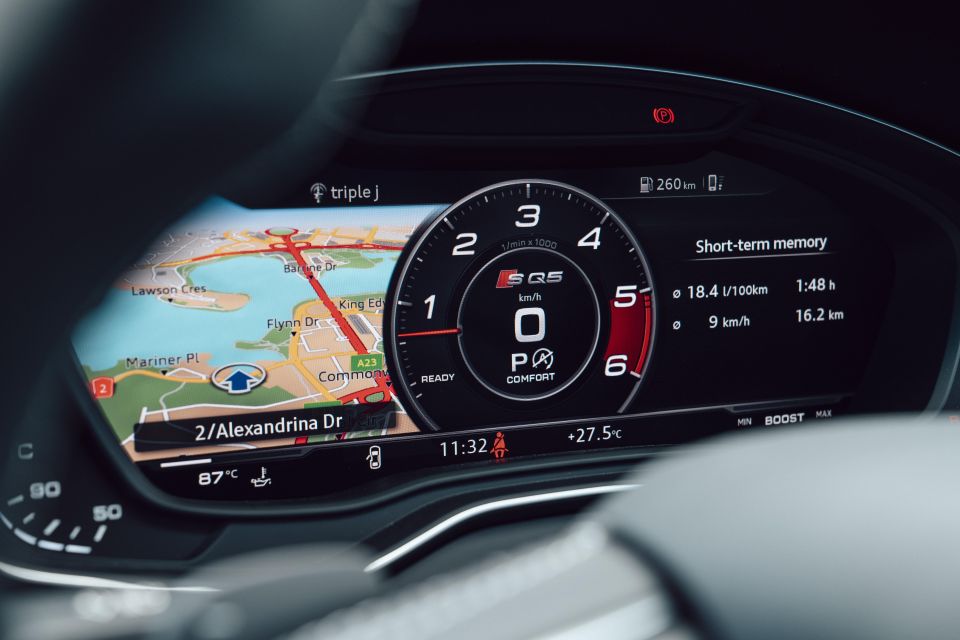
Inside, the wagon gets high-level ‘S’ grade appointments and features, including S-spec heated electric sports seats with massage functionality, fine Nappa leather trim, extended upholstery package, carbon-fibre inlays, three-zone climate control, 12.3-inch Virtual Cockpit digital instrumentation, a head-up display, an auto-dimming rear-view mirror, 30-colour ambient lighting, and a space saver spare wheel.
Infotainment is the older 8.3-inch display – newer Audis have 10.1-inch touchscreens only – with an MMI touch console controller and MMI navigation plus content. It has sat-nav, DAB+, a Wi-Fi hotspot, Bluetooth connectivity, wired Apple and Android smartphone mirroring, and wireless phone charging. There’s also an array of USB-A and USB-C ports throughout the cabin.
What’s new in the second-generation SQ5 TDI over the last one? Outside, a panoramic sunroof is standard, as is the aforementioned metallic/pearl effect paint. Inside, the sport seats have comfort headrests, there’s an extended upholstery package for the console and armrests, a head-up display has been added, and the mighty 755W 19-speaker sound system is par for the course.
Adaptive cruise control with traffic jam assist, 360-degree cameras, Audi parking assistance plus, and tyre pressure monitoring are also on the standard features list.
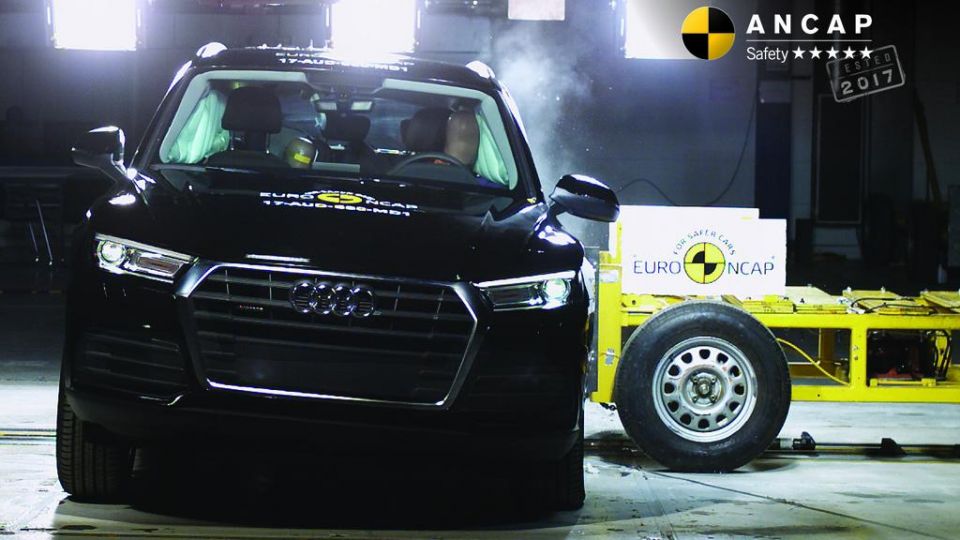
The SQ5 wears a five-star ANCAP safety rating from a 2017 assessment conducted by Euro NCAP, applying to all Q5 and SQ5 wagon versions.
The range was rated a high 93 per cent for adult occupant protection and 86 per cent for child occupants, with 73 per cent for pedestrian protection.
Audi’s mid-size didn’t fare particularly well for safety assistance, though. Its 58 per cent result was hamstrung by 1.5 out of 3 for speed assistance and 0 out of 3 for lane support functionality – the latter due to launch versions of the Q5 not offering a lane support system in Australia, though the current MY20 Q5 and SQ5 range gets lane-keep assist as standard.
It has eight airbags in total, plus AEB with city-speed pedestrian detection and all-speed functionality up to 250km/h, along with forward collision warning, blind-spot monitoring, lane departure warning, lane-keep assist, blind-spot assist, attention assist, rear pre-sense (which prepares the seatbelts and airbags if a rear-end collision is detected), rear cross-traffic assist, an active bonnet, ‘turn’ assist that monitors oncoming traffic and ‘exit’ assist that senses cars and cyclist when you want to open the driver’s side doors.
It’s certainly not lacking for safety smarts. Further, the SQ5 has a beefy pair of 375mm front anchors with six-piston calipers.
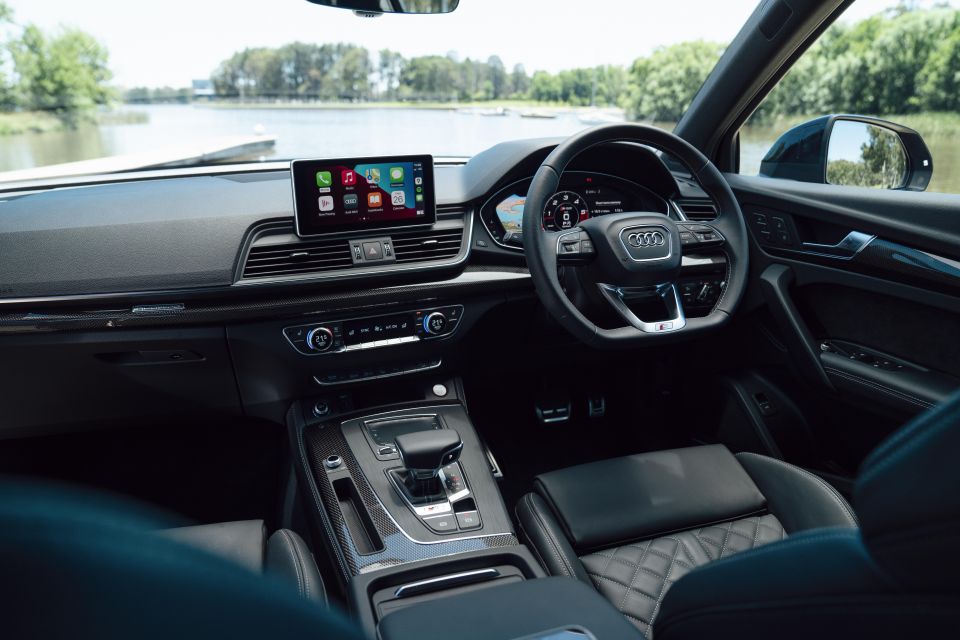
Disclosure time: Audi Australia launched the SQ5 TDI SE concurrently with S4, including the Avant wagon version your author (at least) would probably use as a logical cross-shop.
Having a handy hands-on comparison served to demonstrate differences in practicality (bugger all), ambience (quite a bit) and the sense of freshness (fairly evident) between Audi’s older cabin treatment in the SUV and the fresher ‘new Audi’ vibe of the S4 Avant.
Its Q5 basis is a good size for performance enhancement. Its boxier interior dimensions makes it feel thoroughly SUV-like, though its middling overall size imparts of a bit of ‘jumbo hot hatch’ vibe you just don’t get in genuinely big family haulers. Not too heavy or light – just right.
Execution is typically Audi, with neat integration and a fine sense of solidity minted in quality materials and controls. That said, it’s oh-so slightly plasticky is a few areas, such as the door grab handles, if you want to nitpick.
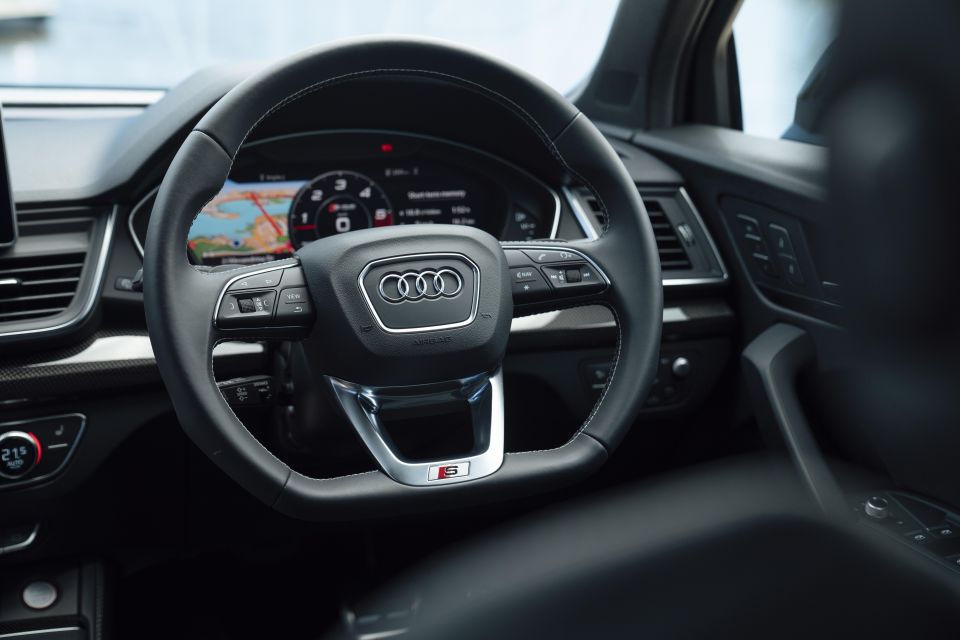

The square-horn flat-bottom wheel marks a handsome counterpoint to the 8.3-inch floating infotainment screen that screams ‘old generation’ and is the single feature that drags the cabin down despite decent clarity and functionality.
It’s surprising how yesteryear’s display hardware and skin software, including the Virtual Cockpit content, ages so damn quickly when you have the newer stuff to reference against.
There’s really nothing bad about the cabin displays. In fact, the now nearly-defunct MMI touch controller with handy shortcut buttons feels and functions like an old and familiar friend. But it’s the one area of this SQ5 version that might really persuade you to wait for the mid-2021 facelift.
Elsewhere, the S-grade treatment is pleasing balanced in a way the trumped-up, racy RS cabins don’t. Then again, the LE pack replaces lovely brushed alloy with lashings of carbon-fibre that won’t be to all tastes.
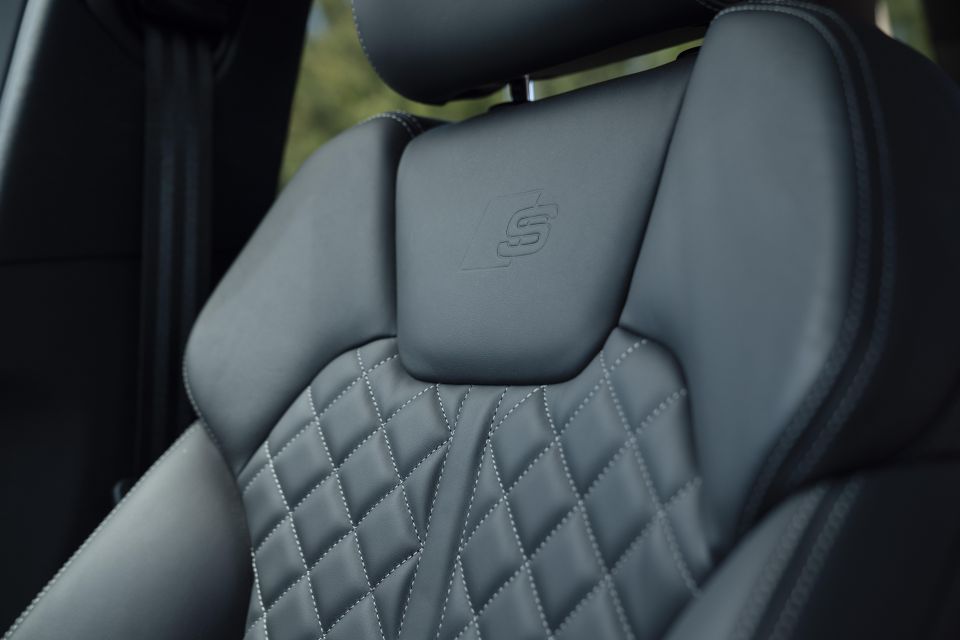
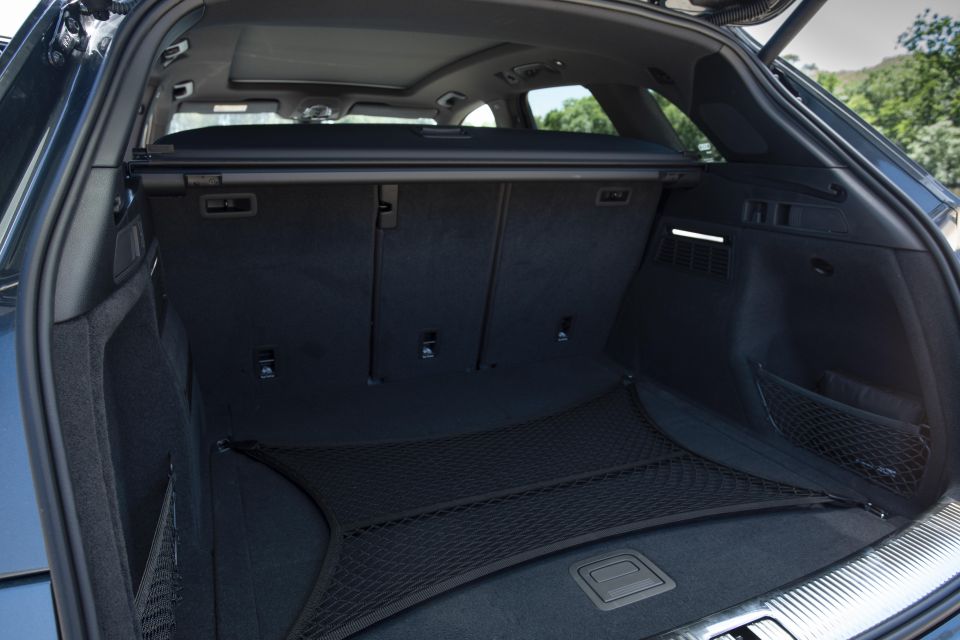
It feels like a driver’s machine without goading you to attack every trip to the shops like a Grand Prix qualifier. The seats are excellent, highly tuneable for comfort, and certifiably lumpy in massage mode when you can’t find the switch to turn it off (on the side of the seat).
It has fine driver ergonomics, too, and the seating is nicely hunkered down while still offering decent under-thigh support, an area where the S4 struggles.
Rear room is quite decent and more SUV than the Avant if mostly due to the sense of airiness in headroom. Less SUV-like is the slide-able base and tilt-able seat backs that are contoured to favour the outboard positions almost like a two-plus-two, leaving an uncomfortable middle position over the huge tail shaft hump. Despite being a five-seater, it’s best for four adults only.
The dedicated rear climate controls, dual USB ports, and 12V outlet show Audi genuinely take row-two comfort seriously. It’s surprisingly rare in family hauler segments of all sizes and much welcome here.
The 40:20:40 split-folding seat back convert luggage capacity from 550 litres as a five-seater to 1550 litres as a two-seater, with decent width and a reasonably flat load space. The S4 Avant, by contrast, loses roughly 100 litres of space by both measures. The four-point luggage net is neat and the powered tailgate is pretty much expected at this price point.
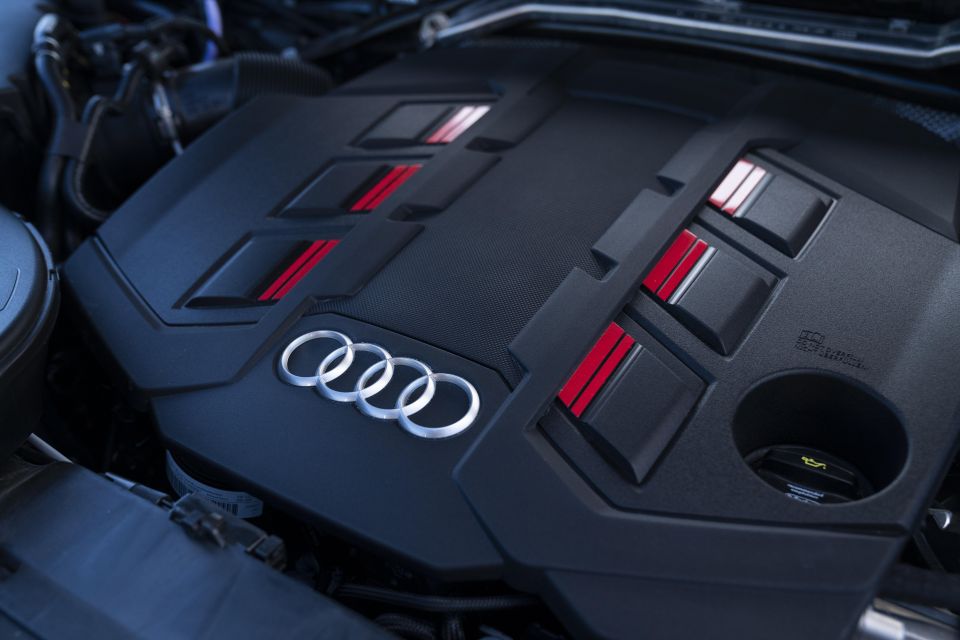
The big change to the diesel SQ5 formula is under the bonnet.
Gone is the old Plus-spec 250kW/700Nm turbocharged 3.0-litre diesel V6, which supplanted the original version’s 240kW/650Nm, and arrived is the new force-induced3.0-litrebent-six oiler good for 255kW and 700Nm. Not much of a numerical advantage, right?
The key difference is the old twin-turbocharged configuration has been replaced by a sequential-type electric-compressor with a single turbocharger design.
The EPC (electric power compressor) is located beyond the intercooler with its own bypass system, and provides 2.4bar of charge at up to 70,000rpm courtesy of a 48V electric system with the intention of reducing lag.
It’s the SUV’s big engineering sea-change and the new engine forms the basis for the slightly cleaner 251kW version due in 2021’s facelift.

Despite the changes, performance claims for the newbie are identical to the old Plus at 5.1 seconds for the 0-100km/h sprint. And even though SQ5 has adopted so-called ‘mild hybrid’ sailing stop-start said to bring as much as a 0.7L/100km fuel saving, claimed combined consumption hasn’t budged from 6.8L/100km with the changes under the bonnet.
Consumption on test was very good. It consumed middle sixes at a cruise and climbed up into the nines at a full-noise punt, exceptional returns for the sort of flexible performance the SUV doles out with such outputs.
The exhaust note is augmented though not technically synthesised, as the enhancement is in exhaust hardware itself outside the cabin rather than being fed inside the cabin via speakers.
It’s once again backed by an eight-speed conventional automatic paired with a Quattro system featuring a standard-fit centre torque varying differential – up to 85 per cent rear bias – with the option of a sport rear differential as fitted to our test machine.
Suspension is, much as with the rest of the Audi’s S-spec gear, steel sprung with adaptive damping though, again, our tester had the optional adaptive air suspension.
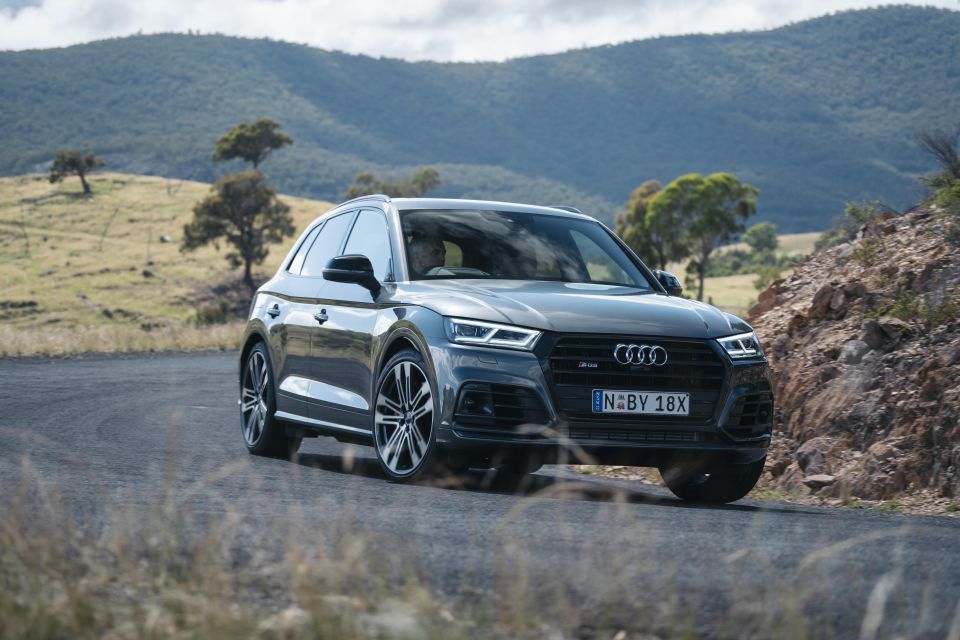
On the move there’s a tremendous amount of mid-range punch, be it in Sport mode or in full Dynamic mode. The Virtual Cockpit’s central tacho skin positions 3000rpm due north, neatly bisecting idle to the left and redline to the right. It’s quite helpful for finding the full 700Nm peak that thrusts the SQ5 wherever its pointed with breathtaking enthusiasm.
It sounds beaut, too: rich and bassy, not terribly unlike a petrol V8 but with a unique character. The most effective method of getting to B from A is riding the torque without chasing too much top end, where the engine’s shove tends to wane around redline, but the forward ratios of the eight-speed auto are tightly stacked enough it’s easy to stay in the relatively narrow peak torque band.
At least, that’s what it’s like in manual transmission mode.
Left to self-shift in Eco, Comfort or Auto – take your pick – and off-the-mark response is noticeably laggy. Squeeze the throttle and there’s a fair pause while the diesel wakes up before it mounts its lusty torque ramp. Weird, particularly given seemingly all the 48-volt EPC tech representing this engine’s key highlight is specifically designed to alleviate such dull initial response.
A switch to Sport or Dynamic mode returns slightly swifter off-idle response, but not nearly enough as you might hope for.
Short of user error – perhaps I’ve missed some EPC ‘on’ switch somewhere – the lack of linearity in delivery isn’t really good enough. It’s been a while since I’ve driven the old SQ5 oiler and I don’t recall that version being quite so tardy.
Problem is, you can’t really drive the thing around the ’burbs or to the shops in Manual mode. It’s too urgent and offers too much squirt.

Where expert car reviews meet expert car buying – CarExpert gives you trusted advice, personalised service and real savings on your next new car.
Perhaps book-ending my SQ5 TDI experience with S4 Sedan and S5 Coupe, fitted with the same turbo 3.0-litre petrol six-pot offered in SQ5 TFSI, isn’t doing the oiler comparative favours. The petrol mightn’t swing quite as hard in the mid-range but its sharper, more even delivery and keener top-end make it more drivable and satisfying as an all-rounder.
The air suspension switches between pliant in ride and assertive in handling nicely enough, with cooperative accuracy and an enthusiasm for changing direction despite its hefty 2055kg mass. The front end is accurate, steering direct if lacking a bit in genuine weighting, and point-to-point along a country road it can be both impressively brisk yet utterly surefooted.
The 255mm-wide rubber drums up a tremendous amount of grip and traction, irrespective of road quality, to a point where on the road it’s tough to discern if and where the optional rear sport differential is weighing in at all. Necessary fitment? I doubt it.
Our brief driving route featured little in the way of urban work but dial the SQ5 back and there’s quite a fine and impressively sedate family wagon not far below the surface. It’s quiet when it wants to be, easy to judge on the road and in carparks, and fuel consumption for its size and sense of purpose is truly impressive.
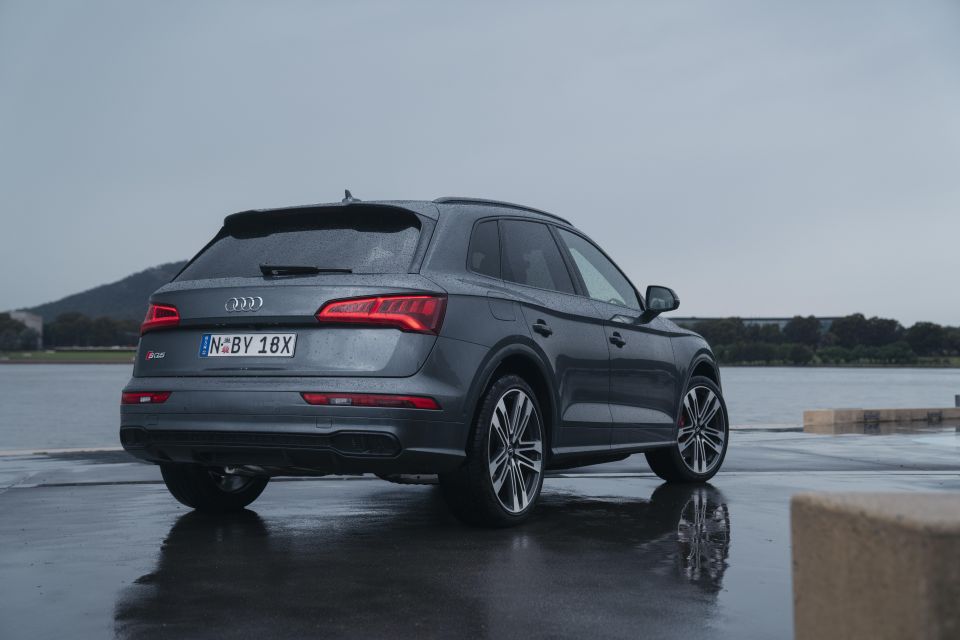
Audi’s usual three-year, unlimited-kilometre warranty applies to the SQ5 from its initial registration date or customer delivery, whichever comes first.
A five-year servicing (75,000km) plan is offered at $2940 total, which is pretty decent, with servicing intervals occurring every 12 months and 15,000km.
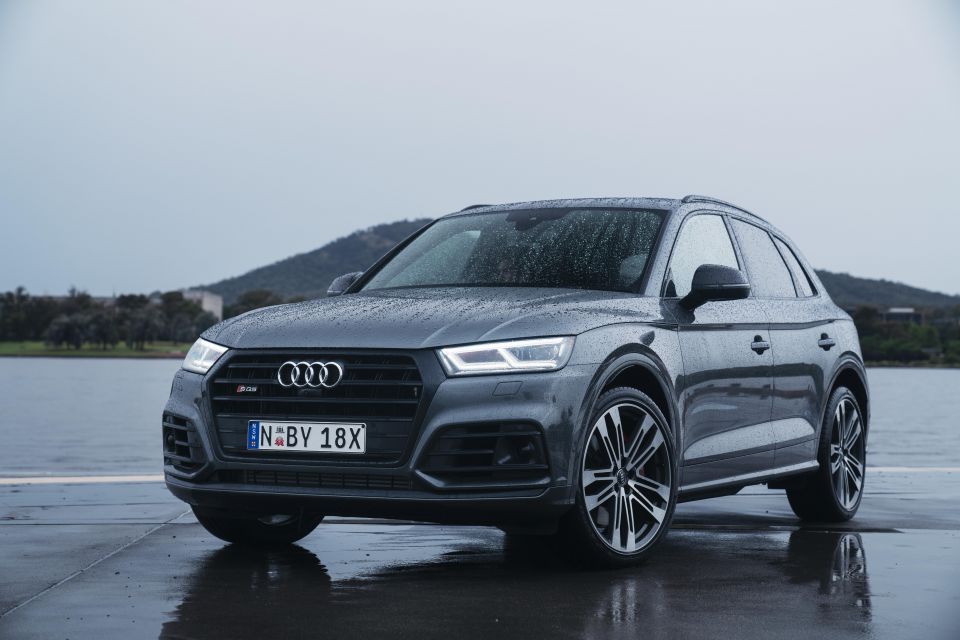
I’ve been a fan of the diesel SQ5 concept since I first drove the original version back in 2013.
Its combination of torquey performance and frugality in a package boasting a nicely balanced sport-luxury nature certainly brought something new to the SUV landscape that was only really challenged, for a while at least, by the now-defunct Porsche Macan S Diesel.
Fast forward, your reviewer wanted to like the SQ5 TDI Special Edition more than what became reality.
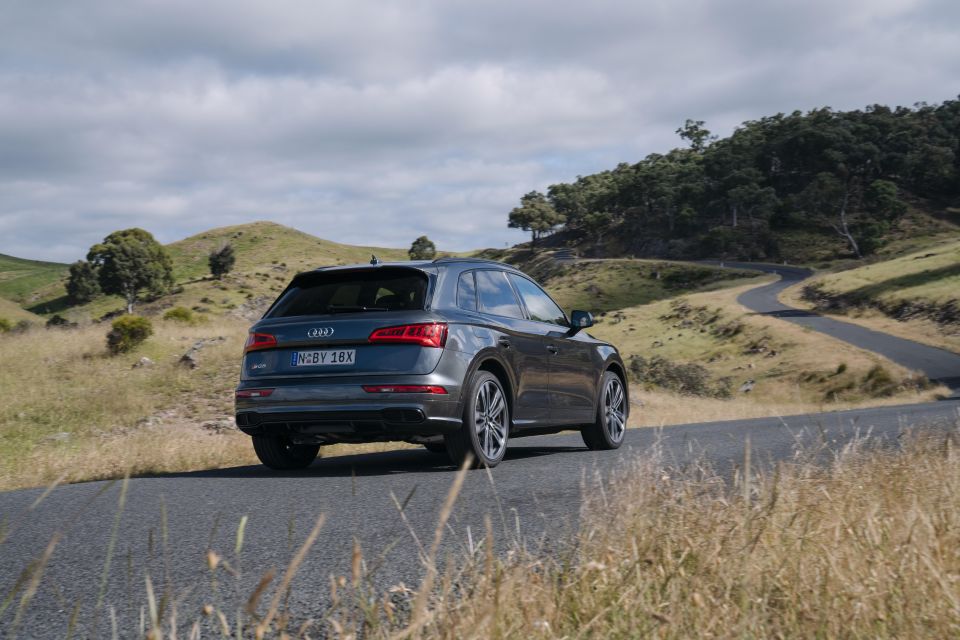
That its techno window dressing feels a bit dated takes a little of the shine off its halo, but it’s the rollercoaster delivery of the EPC-boosted engine – the new bit of the package – that’s the root of the real tarnish.
I can’t help thinking the SQ5 TDI Special Edition is some relatively minor powertrain calibration fiddling away from a return to highly desirable form. Suddenly the TFSI version looks more attractive than it ever has been.
Perhaps the revised tuning – for cleaner running – in the forthcoming 2021 facelift will iron out this otherwise beaut machine’s pesky gremlin.
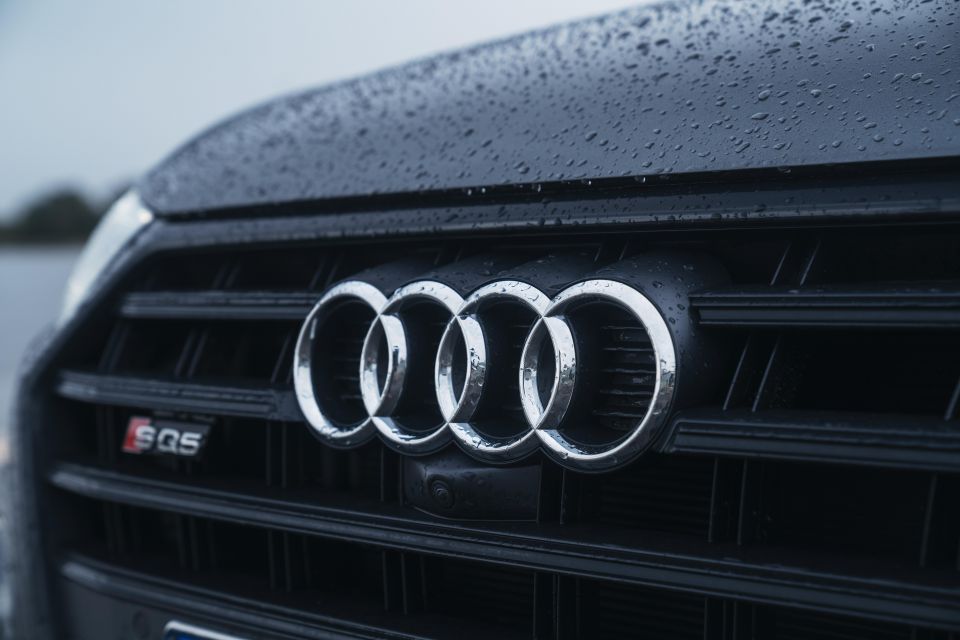
Click the images for the full gallery
MORE: Audi SQ5 news and reviews MORE: Audi news and reviews
Where expert car reviews meet expert car buying – CarExpert gives you trusted advice, personalised service and real savings on your next new car.


Matt Campbell
5 Hours Ago


Max Davies
21 Hours Ago


William Stopford
21 Hours Ago


Derek Fung
21 Hours Ago


Max Davies
1 Day Ago


William Stopford
2 Days Ago